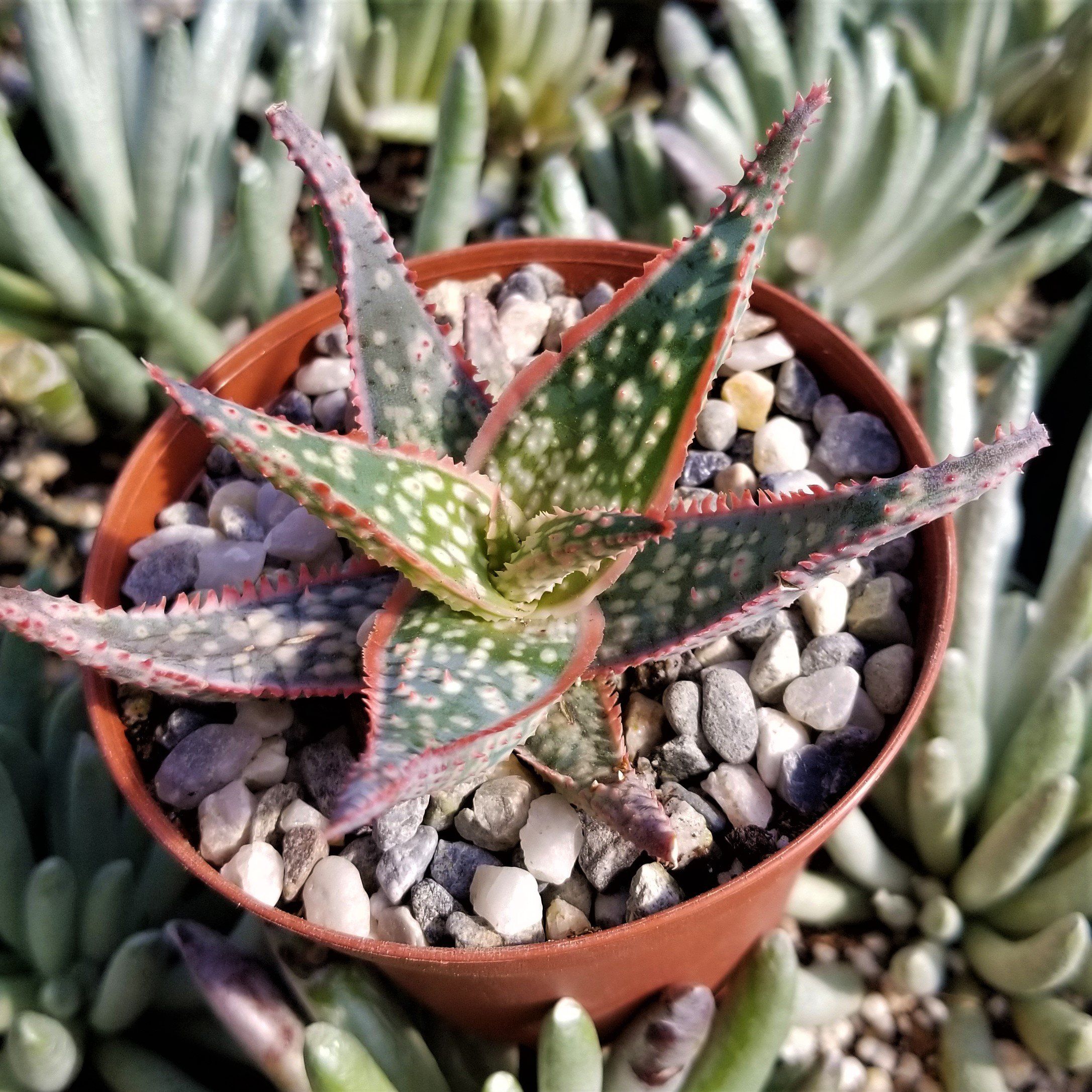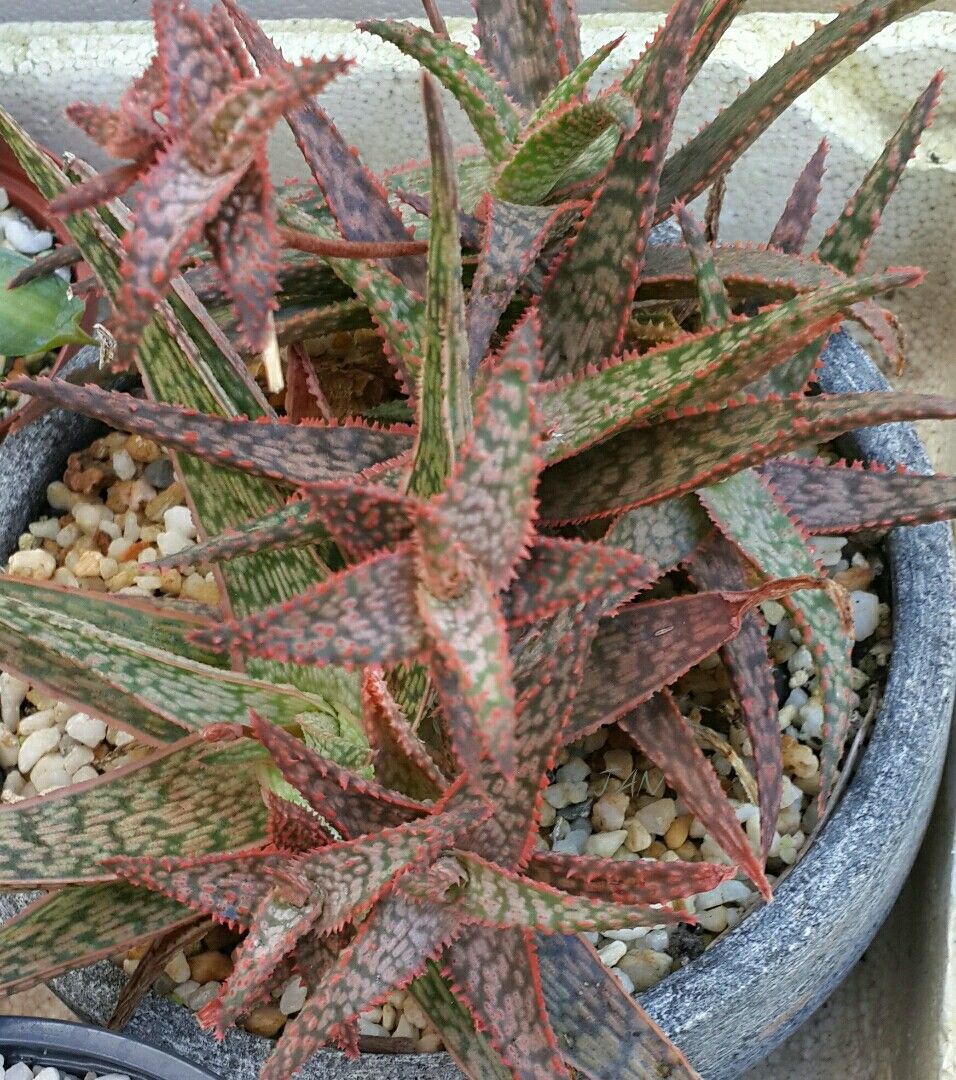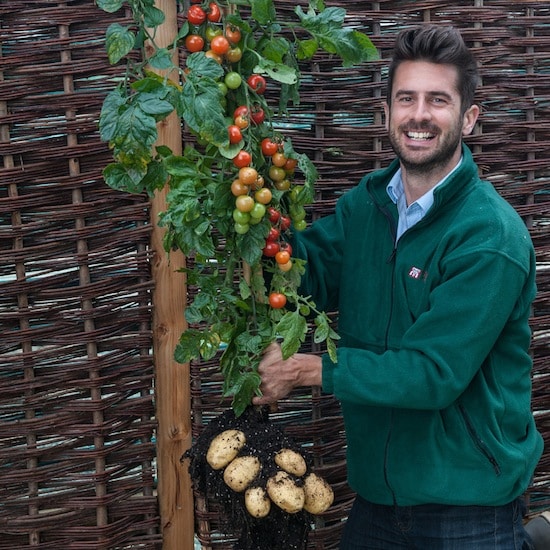Current Challenges In Crop Breeding
Humans around the world have an increasing appetite for diverse and nutritious foods. Feeding the world is no easy task! The answer lies in using the croplands we have in the most sustainable ways. Crop breeders work to develop crop varieties that are more productive and more nutritious, despite challenging environmental conditions. Breeding projects might take these factors into consideration:
These challenges are out thereand changing every day.
One: Prepare The Recipient Plant
When you crossbreed, one of your plants will give pollen, and the other will receive it.
So, decide which plant will be the giver and which will be the receiver.
Next, select a closed bud on the plant that you wish to transfer the pollen to and gently open its petals so that you can get at its inner parts.
You will then need to remove the anthers if the flower has them using a pair of small scissors.
Removing the anthers prevents the flower from pollinating itself and not accepting pollen from the other plant.
When you have done this step, get a paper bag and place it over the flower.
Then, go to your pollinating plant.
Flower Basics In Animal Crossing: New Horizons
When you begin playing New Horizons, youll have at least one native flower located all around the island. Additional flower types can be obtained from Nooks Cranny, by traveling to a Mystery Island, or by taking variants from your friends islands. When you find a new variant, youll need to dig them up with the shovel to plant them on your own island. If youd like to take something from a friends island, make sure theyre saved as a Best Friend.
You wont be able to replant picked flowers, but the stems will remain, allowing new petals to grow.
After introducing new flower variants to your island, planting them near other flowers will allow you to cross-breed them.
Read Also: Where To Buy Flatout Bread
Pollinating The Female Plants
The females are ready for pollination a few weeks after displaying signs of white pistils. There will probably be buds forming at that stage. The pistils should still be white . Isolate your chosen female from the rest of your crop and switch off the grow rooms fans.
A few weeks after displaying signs of white pistils, female plants are ready for pollination. They turn red or brown at harvest time.
Place the bag of pollen over a stem that has several buds growing. Shake the bag to ensure the buds get coated with pollen. Cover the site with the bag for a couple of hours and shake it again to get the last bits of pollen out. Leave the bag on the site for a few more hours and remove it carefully.
How To Crossbreed Weed: Comprehensive Guide

Looking back to the cannabis strains from the 1900s, there is a lot of difference you can see compared to the present time. The majority of the weeds now have a variety of THC levels, terpenes, and CBD composition. This perhaps is due to the widely approved states allowing cannabis cultivation around the globe.
Hence, there are plenty of cultivators are actively creating strains day after day. You might be wondering how these newly sprouting strains are coming. Well, these are all achieved through cross-breeding, a method of combining two or more genetics of cannabis strains to give an offspring with ideal characteristics from its parents.
Learning how to crossbreed weed had opened many consumers to a wide array of choices that has specific characteristics enjoyed by many, and many breeders have constantly worked into creating much wider options of strains. Although the whole process of how to crossbreed weed may seem simple, there are specific ways that are far complicated than you imagine. In this article, we will tackle the process of how to crossbreed weed, starting from picking ideal strains, to pollination up to the last part. Take a look at the steps below.
You May Like: Where To Watch American Pie For Free
The Pros And Cons Of Merging Two Plant Species
Creating a hybrid plant is a popular process for commercial growers and intrepid backyard gardeners who are up for a challenge. Hybrid plants are developed to have newer and more desirable qualities. Commercial gardeners use this process to make better plants and most modern plants currently available to home gardeners are also hybrids. But you can also learn how to create your own unique hybrid plants right in your garden through experimentation.
Use Drones To Pollinate
In larger orchards, drones can be used to pollinate trees. Drones equipped with special containers and nozzles spray pollen directly on top of flowering trees. Gravity and wind do the rest.
- Drone pollination makes it easy to cross-pollinate with a specific variety. All that has to be done is purchase that varietys pollen specifically.
- Pollination with drones is getting price competitive in areas where bees are rare.
You May Like: Small Aluminum Foil Pie Pans
Hybridization Or Hybrid Plants
Sometimes two different species within a family can bear fruit together and will have offspring. This is called hybridization or hybridizing, and the offspring is called a hybrid.
- For example, butternut and red kuri will result in fertile fruit. The new fruit, if grown from seed, will resemble a mix of both. It will be a new squashhybrid.
- Most types of citrus are hybrid.
In a way, hybridization is a successful cross-pollination between two different species.
- Hybrid plants may be sterile, but not necessarily.
- Sometimes traits are lost after a few generations. In other cases theyre stable and a new species has been created or bred.
Four: Adding The Nutrients
As the female cannabis turns into mother cannabis, the next step on how to crossbreed weed is by providing it with much-needed nutrients and an extra kick of nitrogen. As recommended by breeders, you may follow the feeding schedule of cannabis during its vegetative stage. This is the ideal feeding time and frequency of the food, enough for the mother cannabis to be healthy.
At this point, the seed is expected to form after few weeks and it will burst out through the plants calyxes after a couple of weeks. If there is a need for storing the seeds, make sure that they are stored in a dark area with a cool temperature, and not freezing.
Read Also: Creamy Chicken Pot Pie Recipe
Important Note On How To Cross Breed Peppers
Firstly, you need to understand that peppers are capable of self-pollination. Under normal conditions, pepper plants will self-pollinate once the flower has been fertilized by compactable pollen. A bee buzzing around plants, a rush of wind, or even an ant can initiate the process of self-pollination.
It is important to prevent self-pollination from peppers since our goal is to crossbreed our desired traits. Therefore, we need to manipulate the pepper plant.
- This brings us to the process of emasculation. Since we dont want the parent plants to self-pollinate, we need to carefully remove some reproductive parts. The male reproductive part is removed from the maternal pepper flower plant. The maternal parts are left alone because they are chosen to bear fruit.
So, lets further look into guidelines on how to crossbreed pepper plants.
How To Grow Hybrids
To create a hybrid plant, pollen is exchanged between two varieties of the same plant. More specifically, the male part of one plant’s flower pollinates the female part of another flower. The resulting fruits will have hybridized seeds that you can harvest, plant, and grow.
Even though you can’t control the outcome of the hybridization process, you could still be delighted with the new plants you created from harvested seeds. Your hybrid plant may be a delicious new color from the parent plants, for example. Just don’t get attached to your creations, because you may never see the exact same plants again. Here are the steps to develop your own hybrids:
Also Check: Family Size Chicken Pot Pie
Plant Breeding Methods For Higher Yields
If you are trying to breed plants with the end goal of higher yields, it is ideal to start with a variety of the plant that produces prolifically, and cross it with the plant that underproduces.
In this situation, you probably have a plant that has great tasting fruit, but doesnt produce enough of them! This is a classic predicament in plant breeding, and can take several generations to begin seeing desirable results.
Unfortunately, for higher yields, it is ideal to have a larger scale operation to speed up the process. If you have more places to grow individual plants, you can more quickly experiment with resulting hybrids.
More plants can also lead to increased likelihood of unintentional cross pollination, so be careful!
We hope you enjoyed this article all about plant breeding methods, and are excited to get started with your own experiments. Crossing two plants can make gardening much more exciting, with amazing results to share with friends and family.
Have you had success with plant breeding at home? Share with us in the comments! We love seeing new varieties of plants .
Cross Pollination Possible To Increase The Harvest

Almost all varieties and species will bear a larger harvest if they are cross-pollinated with other varieties.
This is especially true for most self-pollinating varieties. Although they will bear fruit without any outside pollen, there are still advantages of cross-fertilizing them:
- fruits less likely to drop when stressed
- fruits arent seedless anymore though
Recommended Reading: Enameled Cast Iron Pie Pan
Future Opportunities In Crop Breeding
Crop breeding is a rapidly advancing science. It is able to make use of genetic and biotechnological innovations to efficiently develop better crop varieties.
Recent biotechnological developments are helping breeders make desired genetic changes with much greater precision. Breeders can cut out, add in, or otherwise edit genes so a plant can be more productive. Techniques such as mean plant breeders can quickly choose plants with desirable traits.
In addition, crop breeders gather a lot of information about the unique qualities of each plant. This means plant breeders have to be savvy in the art of working with vast amounts of data. Developing methods to store, share, and quickly analyze these data will produce significant advances in plant breeding.
Read more about plant breeding research here.
Taking The Next Steps
Crossing two kinds of plants results in what is called an “F1” or a “conventional” hybrid. Repeating the original cross-breeding that produced the hybrid is necessary every time you want new seeds, however. The seeds of an F1 hybrid have lots of genetic diversity. When those seeds are harvested and germinated, though, the resulting F2 hybrid plants demonstrate a wide range of characteristics. If you like a certain trait of some of the F2 hybrids, you can select only the plants that display that characteristic and continue breeding them and saving seeds from the resulting plants that have the desired trait, developing a new variety. It takes several plant generations to result in a stable variety from F2 hybrids.
Related Articles
Read Also: Recipe For Shepherd’s Pie With Hamburger Meat
How To Crossbreed Pepper Plants
Posted on Last updated: 03/13/2021
In this article, Ill share a simple, effective method for how to crossbreed peppers properly. With enough time and space, you can cross two pepper varieties to create a brand new type of pepper.
Intentional plant breeding dates back to the early days of agriculture. Early efforts used the selective breeding method. Essentially, people were growing starch grains every year, selecting the best quality plants to use for the next years crop.
Today, plant breeding is responsible for almost any fresh produce you can buy at the grocery store. From huge, oversized apples to super-sweet grape tomatoes, crossbreeding was certainly a part of their creation.
Peppers have made major strides through crossbreeding methods. Some examples include the super-spicy 7 Pot Primo and the non-spicy habanada pepper. These, and many others, have come from careful cross-pollination methods and a whole lot of patience.
Habanada Pepper .
Hopefully this doesnt scare you, because after all, crossbreeding occurs in nature. Humans simply observed and learned how plants have evolved to work over their millions of years on the planet.
So, today Im going to share the basic method for crossbreeding peppers the right way. Although it is relatively simple, it takes a lot of time, dedication, and patience to be successful.
Lets get started!
Phenotyping And Artificial Intelligence
As of 2020 machine learning â and especially deep machine learning â has recently become more commonly used in phenotyping. Computer vision using ML has made great strides and is now being applied to leaf phenotyping and other phenotyping jobs typically performed by human eyes. Pound et al. 2017 and Singh et al. 2016 are especially salient examples of early successful application and demonstration of the general usability of the process across multiple target plant species. These methods will work even better with large, publicly available open data sets.
You May Like: How To Make A Pie Chart In Excel
Tips And Tricks For Crossbreeding Cannabis
Although crossbreeding is technically a four-step process, there are numerous ways to mess it up. Here are some top tips to ensure success.
- Start With High-Quality Seeds The best seeds have a hard outer shell and will germinate quickly. If you start with lackluster seeds, youll wind up with dud plants if they germinate at all.
- Stay Organized Each set of seeds will have different genetic materials, so mixing everything up is easy. Crossbreeding requires controlled environments, so be sure to label everything, from plants to seeds to pollen.
- Start Small Dont bite off more than you can chew. Start breeding two parents and see how well backcrossing works for you. Once the system is organized, you can try breeding multiple sets of plants.
- Maintain Separation at All Times Its really easy for cannabis plants to pollinate each other. Never mix plants and never leave males out with your regular crops. Accidental pollination can cost you a lot of time, energy, and profitability.
Three: Pollinate Your Females
You dont need much pollen to fertilize your female plants. Just a brush stroke or two on their buds is enough to start the process. That said, you need to make sure to deactivate the pollen after fertilization. The simplest way to do this is by spraying the plants with water about three hours after pollination. Again, keep all of your breeding plants separate from the rest of your crops. Even if youve deactivated the pollen, there may be some residual granules that can float over to another plant.
Read Also: The Original Italian Pie Menu
Four: Cover The Pollinated Flower
When you have transferred the pollen, put the paper bag over the flower again and tie it around the flowers stem.
Covering prevents the flower from being pollinated by another plant and increases the chance of getting a crossbreed of the two you have chosen.
Some people use plastic bags to cover the flower, but this increases the risk of the flower rotting because the plastic will trap moisture around it.
So, you should use paper bags when covering for the long term.
You should now leave the bag over the plant, but it is okay to peek inside occasionally to see if you have been successful.
Overall, if your plant head begins to shrivel and drop its petals, your experiment was likely successful.
You should gradually see the ovule, which is where the seeds form, beginning to grow fatter as the seeds ripen.
If you see this, it indicates that you transmitted the pollen correctly and that the flower accepted it.
Breeding And Food Security

For agriculture to thrive in the future, changes must be made to address arising global issues. These issues are the lack of arable land, increasingly harsh cropping conditions and the need to maintain food security, which involves being able to provide the world population with sufficient nutrition. Crops need to be able to mature in multiple environments to allow worldwide access, which involves solving problems including drought tolerance. It has been suggested that global solutions are achievable through the process of plant breeding, with its ability to select specific genes allowing crops to perform at a level which yields the desired results.
Also Check: New York Times Mango Pie
Crossbreeding Cannabis: Understanding The Difference Between Dioecious And Monoecious Plants
The majority of garden food crops are monoecious, which means each plant has male and female organs. However, marijuana plants are dioecious, which means they consist of separate male and female plants. Female plants are grown for their THC-laden buds, while male plants are used to pollinate females to get seeds.
As cannabis is a dioecious plant, you have to pollinate the female with the male. The resulting seeds from cross-pollination represent a far greater genetic variety than self-pollinating plants such as tomatoes.
Unlike most garden food crops, which are monoecious, cannabis is a dioecious plant. This means that it consists of separate male and female plants.
Consequently, crossbreeding marijuana plants is a long, unpredictable, and sometimes utterly frustrating experience. Many breeders begin with a clone-only strain and try to develop a seed-based strain with the traits of one of its parent plants. If you go down this route, expect a different result with every seed. Breeders sometimes sprout well over 100 seeds from a single variety to find the true representation of what they sought.
In most cases, breeders are seeking to create a hybrid strain that is a stable genetic line.